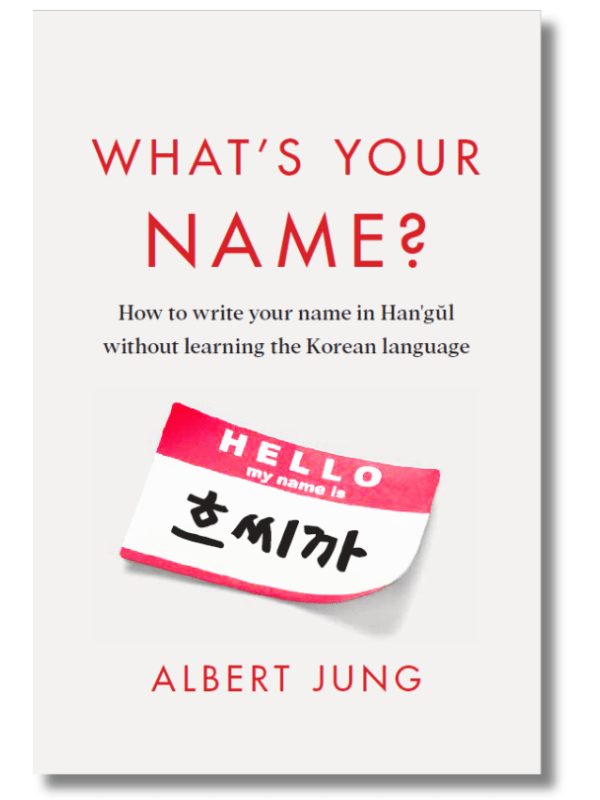What’s Your Name?
by Albert Jung
Genre: Nonfiction / Language
ISBN: 9791199003217
Print Length: 238 pages
Reviewed by Warren Maxwell
A remarkable dive into how Han’gŭl can be used to pronounce, articulate, and learn other languages
“The Old Testament mentions that 42,000 people were killed for not pronouncing the sh sound in Shibboleth correctly.”
What’s Your Name? sets out a clear path for harnessing a useful pronunciation tool. Highlighting the numerous situations in life, large and small, when correct pronunciation is both essential and hard to achieve, this book proffers the Korean alphabetic system of Han’gŭl as a multipurpose solution for learning and transcribing sounds regardless of linguistic system.
Developed in the fifteenth century by a king bent on increasing literacy in his population, Han’gŭl is an intentionally flexible way of transcribing sounds on paper. Its modern form has been adapted to prioritize the Korean language, but this writing system still stands out for an emphasis on the mechanical way sounds are produced in the mouth and are linked together. There are five basic symbols that correspond to sounds made by moving parts of the mouth, for instance the tongue and molars, and eleven letters including three basic symbols, for the linking-sounds that can be roughly correlated with Latin vowels.
“Han’gŭl is designed to represent sounds based on how they are produced and the nature of those sounds. The shapes of the symbols are designed to evoke the act of making the sound and its properties.”
With its emphasis on Han’gŭl as a practical tool, this book keeps historical narration and facts to a minimum and instead focuses on creating a system for the novice to learn Han’gŭl. There is neither need for a background in Korean language or culture, nor to learn anything about it in order to use the Korean writing system. The book’s three central chapters offer crash courses in modern Han’gŭl, the more flexible ancient Han’gŭl, and then a final chapter that synthesizes the two and emphasizes the many hybrid configurations of Han’gŭl.
Relying on a textbook-like efficiency, each chapter builds on the previous one and uses countless charts, graphs, and in-book quizzes to hone the skills being imparted. The organization of all these elements makes for a learning experience that, while far from simple, is streamlined and approachable. Each page is thought through and leads into the next with seamless transitions.
“The goal is to write as spoken and read as written. Now, it’s your turn.”
Copious footnotes accompany the text and allow for varying levels of engagement with Han’gŭl. For the most part, learners can skirt around footnoted references and nuggets of history (they only begin to dominate the page near the end of the book), while all this is easily available at the bottom of the page for those looking to enrich their study.
The system is elegant and held together by the author’s charismatic voice, which telegraphs an infectious passion for the book’s subject matter. Although some might scoff at the usefulness of a pronunciation tool as complex as this fifteenth century writing system, Jung makes a convincing case that not only is pronunciation an essential part of social interactions and integration, it stores cultural memory and connections to personal identity that are not easily unlocked. As immigrants, expatriates, and language buffs surely know, communication is about both learning a language and knowing how that language is spoken.
A one-of-a-kind guide to pronunciation, this book provides an efficient way of learning the correct pronunciation of a foreign word and a resource for sharing your own language’s pronunciations with others.
Thank you for reading Warren Maxwell’s book review of What’s Your Name? by Albert Jung! If you liked what you read, please spend some more time with us at the links below.
The post Book Review: What’s Your Name? appeared first on Independent Book Review.
